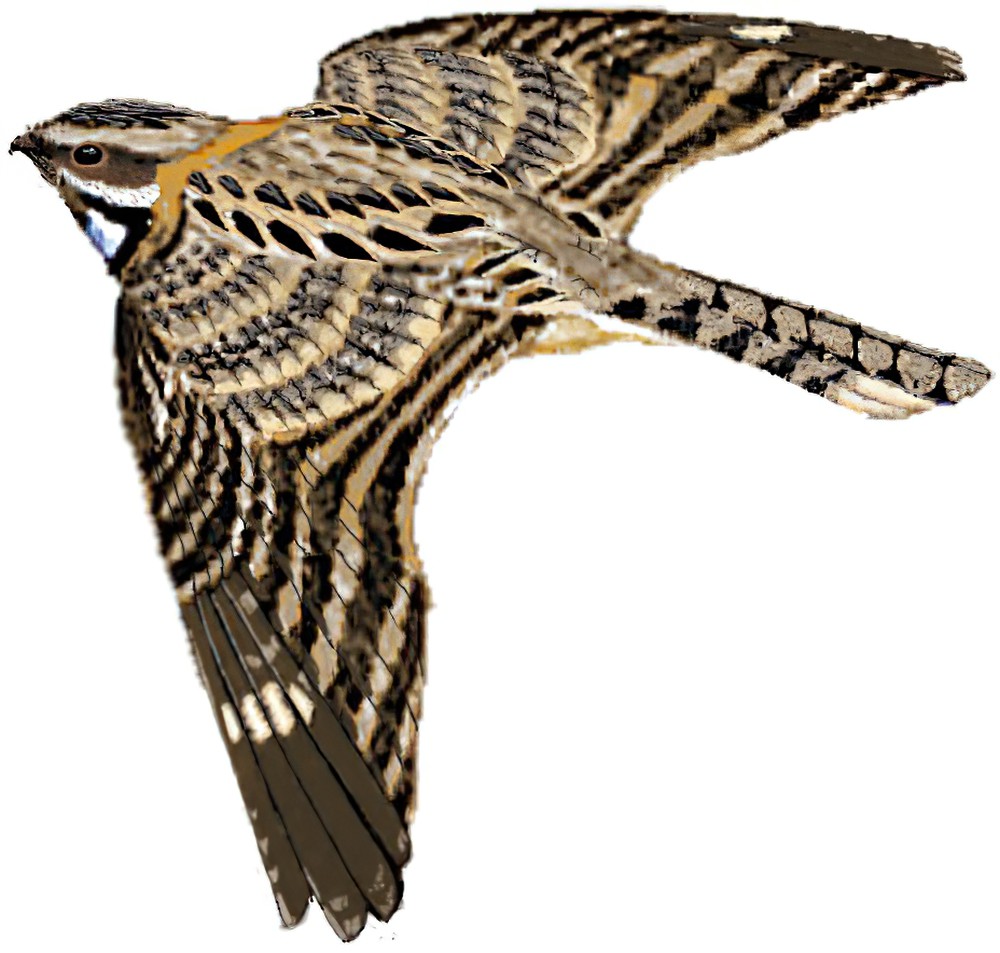Indian Nightjar / Caprimulgus asiaticus

Indian Nightjar
SCI Name:
Protonym: Caprimulgus asiaticus IndexOrn. 2 p.588
Taxonomy: Caprimulgiformes / Caprimulgidae / Caprimulgus
Taxonomy Code: indnig1
Type Locality: India, = Bombay.
Author: Latham
Publish Year: 1790
IUCN Status: Least Concern
DEFINITIONS
CAPRIMULGUS
(Caprimulgidae; Ϯ European Nightjar C. europaeus) L. caprimulgus nightjar < capra nanny-goat < caper, capri billy-goat; mulgere to milk; “Those called goat-suckers ... enter the shepherds’ stalls and fly to the goats’ udders in order to suck their milk, which injures the udder and makes it perish, and the goats they have milked in this way gradually go blind” (Pliny X, lvi (ed. Rackham 1983)); this unfounded rustic superstition was for long associated with the European Nightjar; "NIGHT-HAWK (C. popetue). I have noticed, when skinning this bird, that the male, in spring, exhales a strong hircine odor. If this is common to all birds of the family, it may have added apparent reason to the superstition from which the family name is derived." (Coues 1874); "102. CAPRIMULGUS. Rostrum incurvum, minimum, subulatum, basi depressum. Vibrissæ ad os serie ciliari. Rictus amplissimus. ... Caprimulgus genere differt ab Hirundine, uti Strix a Falcone, Phalæna a Papilione." (Linnaeus 1758); "Caprimulgus Linné, Syst. Nat., ed. 10, 1, 1758, p. 193. Type, by tautonymy, Caprimulgus europaeus Linné (Caprimulgus, pre-binomial specific name in synonymy." (Peters, 1940, IV, p. 196). Linnaeus's Caprimulgus, the final avian genus listed in his historic ground-breaking work, comprised two species (C. europæus, C. americanus).
Synon. Allasma, Capripeda, Climacurus, Cosmetornis, Creapyga, Crotema, Diaphorasma, Eximiornis, Hypsiphornis, Macrodipteryx, Nyctichelidon, Nycticircus, Nyctitypus, Nyctipornis, Nyctisyrigmus, Nyctivociferator, Phalaenivora, Rossornis, Scotornis, Semeiophorus, Stelidopterus, Vociferator.
caprimulgus
L. caprimulgus nightjar < capra nanny-goat < caper, capri billy-goat; mulgere to milk (cf. Gr. αιγοθηλας aigothēlas goatsucker).
asiae / asiatica / asiaticus
L. Asiaticus Asiatic < Gr. Ασιατικος Asiatikos Asiatic < Ασια Asia. The Romans generally and indiscriminately applied the name Asia to Asia Minor (Turkey or Anatolia), the more extensive eastern and southern portions of the great continent being known as Asia Maior. In nomenclature the toponym is nearly synonymous with India.
● ex "Gaur Bunting" of Latham 1787 (?syn. Amandava x Lonchura).
● ex “Bombay Goatsucker” of Latham 1787 (Caprimulgus).
● Erroneous TL. Asia (= Africa) (syn. Caprimulgus pectoralis).
● ex “Purple Indian Creeper” of Edwards 1760, and “Yellow-winged Creeper” of Latham 1787 (Cinnyris).
● ex “Indian Jabiru” of Latham 1787 (Ephippiorhynchus).
● ex “Blue-cheeked Curucui” of Latham 1787 (Megalaima).
● Erroneous TL. The Indies (= Jamaica); ex “Brown Indian Dove” of Edwards 1751, and “Columba subfusca media” of Browne 1756 (Zenaida).
SUBSPECIES
Indian Nightjar (asiaticus)
SCI Name: Caprimulgus asiaticus asiaticus
asiae / asiatica / asiaticus
L. Asiaticus Asiatic < Gr. Ασιατικος Asiatikos Asiatic < Ασια Asia. The Romans generally and indiscriminately applied the name Asia to Asia Minor (Turkey or Anatolia), the more extensive eastern and southern portions of the great continent being known as Asia Maior. In nomenclature the toponym is nearly synonymous with India.
● ex "Gaur Bunting" of Latham 1787 (?syn. Amandava x Lonchura).
● ex “Bombay Goatsucker” of Latham 1787 (Caprimulgus).
● Erroneous TL. Asia (= Africa) (syn. Caprimulgus pectoralis).
● ex “Purple Indian Creeper” of Edwards 1760, and “Yellow-winged Creeper” of Latham 1787 (Cinnyris).
● ex “Indian Jabiru” of Latham 1787 (Ephippiorhynchus).
● ex “Blue-cheeked Curucui” of Latham 1787 (Megalaima).
● Erroneous TL. The Indies (= Jamaica); ex “Brown Indian Dove” of Edwards 1751, and “Columba subfusca media” of Browne 1756 (Zenaida).
Indian Nightjar (eidos)
SCI Name: Caprimulgus asiaticus eidos
eidos
Gr. ειδος eidos likeness, appearance, species, shape, form < ειδω eidō to resemble. This word is the basis of the common suffix -οιδης -oidēs, indicating resemblance, found throughout nomenclature.
Indian Nightjar (siamensis)
SCI Name: Caprimulgus asiaticus siamensis
siamense / siamensis
Siam, a former name for Thailand, and the origin of which is disputed (e.g. Pali suvannabhumi land of gold; Sanskrit syama dark; Portuguese corruption of Chinese name for the area Xian).
UPPERCASE: current genus
Uppercase first letter: generic synonym
● and ● See: generic homonyms
lowercase: species and subspecies
●: early names, variants, mispellings
‡: extinct
†: type species
Gr.: ancient Greek
L.: Latin
<: derived from
syn: synonym of
/: separates historical and modern geographic names
ex: based on
TL: type locality
OD: original diagnosis (genus) or original description (species)












